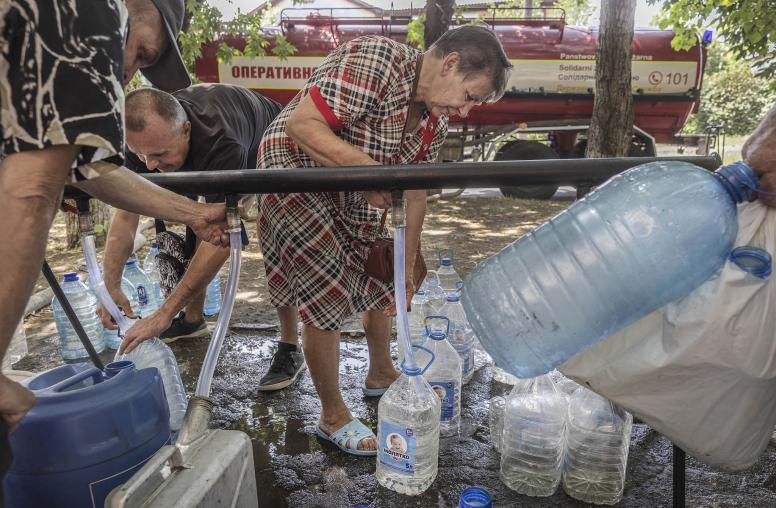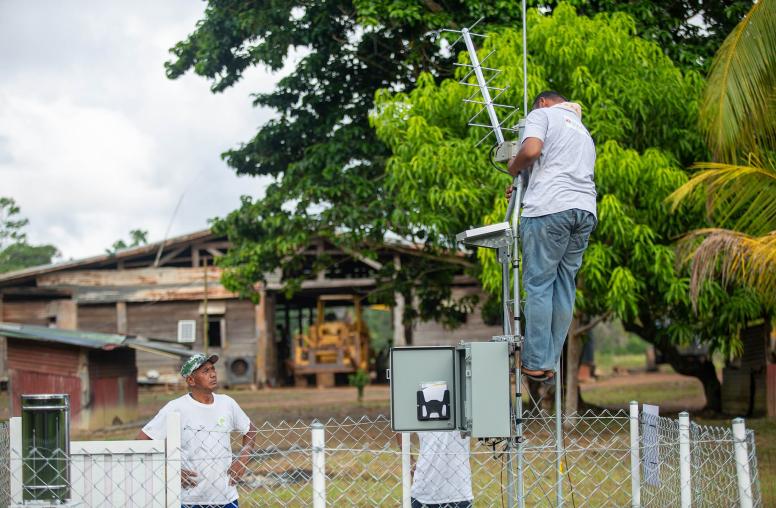Afghanistan's Economy: On the Right Road, But Still a Long Way to Go
Although Afghanistan has now laid the foundation for a market-based economy, substantial challenges still linger. Many of the problems Afghanistan’s economy faces are typical for those rebuilding after war: high prices from an immature system that lacks adequate private sector competition; resistance to change from a state-controlled system; the dearth of human capital; corruption; insecurity; and inequalities created by the market system itself.
Afghanistan has now laid the foundation for a market-based economy. A new economic system, based on the state as a regulator, not a producer, of goods, with a clear separation between the public and private sectors, stands in place of the centralized economy of the past. An independent central bank, a liberalized foreign exchange system, and laws permitting foreigners to wholly own property characterize the new economic landscape. A doubling of the gross national product and per capita income, a 13 percent growth rate in 2007, and modest inflation paint a vibrant picture.
Yet substantial challenges linger. Many of the problems Afghanistan’s economy faces are typical for those rebuilding after war: high prices from an immature system that lacks adequate private sector competition; resistance to change from a state-controlled system; the dearth of human capital; corruption; insecurity; and inequalities created by the market system itself. Critics also believe that the billions of dollars spent on Afghanistan by the international community have not had the expected impact.
The state of Afghanistan’s economy was the subject of a public event at USIP on October 23, 2007 with Afghan Finance Minister Anwar-ul-Haq Ahadi. Beth Ellen Cole, senior program officer at the Institute’s Center for Post-Conflict Peace and Stability Operations moderated. The following is a summary of the event.
Afghanistan’s Private-Public Approach Has Fueled Growth
For several decades before the fall of the Taliban, Afghanistan had a state-controlled economy. While proponents of socialism claim the system was equitable and efficient, Afghanistan made a deliberate decision that the "freedom of the individual to initiate economic activity was most important," noted Minister Ahadi. In the newer market system, Afghanistan has privatized 65 of its state-owned enterprises, a substantial number, and the private sector has helped to increase the welfare of society with competition for the production of goods and services.
The public sector, in turn, must provide regulations, law and order, infrastructure, public goods, and, most importantly, monetary stability. The central bank has gained autonomy in deciding monetary policy, and private banks have expanded their role as well. Furthermore, Afghanistan has liberalized investments, foreign exchange, and trade, all key components of a democratic market economy. Since the new government was put in place under President Hamid Karzai, the economy has experienced high growth—coupled with relatively low inflation and an expanding private sector. The foundation has been laid, Minister Ahadi reported, but Afghanistan must now address its economic weaknesses.
Resources Are Still Inadequate and Security Receives the Lion’s Share
While revenue has exponentially increased in Afghanistan since 2001, expenditures have nearly equaled incoming resources and no funds exist for the country to rebuild its critical infrastructure. Thus far, international donors have completely financed the country’s development budget. The state has estimated that between 30 and 40 billion dollars are needed to complete reconstruction. The international community, Ahadi continued, has been generous in word: total pledges in the past five years have totaled $30 billion—but only $13 billion in contributions from the international community have been spent, and only $4 billion have gone directly to the Afghan government. Of the funds delivered, relatively little has gone to economic development, because of security requirements.
Investments in education, health, and institutional reform are ongoing; the government is now working on power generation, a basic health package, and rebuilding of state institutions. But there is still critical infrastructure, such as roads and power, which have not reached all provinces. The ring road around Afghanistan is a major achievement yet also "very, very basic" when measured against the overall need for roads. Foreign direct investment, for example, is also needed for expanded telecommunications and extraction of copper.
Destroyed Educational Institutions Imperil Economic Development
The education system suffered from decades of fighting in Afghanistan, Ahadi emphasized. While significant progress has been made with more than six million children in schools today as opposed to less than one million under Taliban rule, professional development is lacking. Reform of the higher education system, Ahadi observed, will not produce any real results for four years or more. To compensate for the absence of well-trained professionals, the Afghan government has relied upon the generosity of Western-trained Afghans who have returned. However, any outsiders, including those who left Afghanistan and return, simply cost too much for the government to sustain the level of compensation. The inadequacy of educated locals is a major and long-term problem, he warned.
Corruption and Lack of Security Augment Fundamental Weaknesses
Two of the biggest challenges to Afghanistan’s growing economy are corruption and the significant security problem. Both challenges raise transaction costs; {the cost of?} development projects, for example, have increased by 25 percent. While one challenge—security—has grown in the past one and a half years, newly implemented World Bank recommendations addressing transparency of the government’s economic systems have begun to address corruption. However, "speed and transparency are somewhat in conflict," Ahadi noted, pointing to the inefficiencies in fund disbursement as an example of such a dilemma. Only 60 percent of funds are being disbursed because of stringent procurement procedures, Ahadi stated. He noted further that disbursement of the international community’s budget is about 30 percent. Finally, Ahadi placed strong emphasis on the importance of security. Security is "priority number one," he said, warning that security is a necessary pre-condition and must be realized before the government can pursue further economic reform.
The Way Forward: Cooperation, Expanded Development, and Security
"There is not a better system" than the market economy currently growing in Afghanistan, said Ahadi, and "patience and perseverance" are required to allow the economy to mature. While better coordination with the international community could help allocate more funds toward economic growth, the Afghan government needs to take more ownership and control of fund disbursement. Developing the country’s manufacturing industry and exploitation of natural resources is essential. Long-term solutions are required to develop a sufficient cadre of educated Afghan professionals, and Ahadi hopes to start with an improved strategy for higher education. The updated Afghanistan National Development Strategy (ANDS), which outlines preferred allocation of resources, will be released in spring 2008 and once again, provide a map that Ahadi hopes donors will follow in contributing funds.
The Karzai government will continue to root out corruption, but the top priority for the government is still security. "We have done well," even in comparison with other developing economies, concluded Ahadi. With enhanced cooperation, funding and security, the country can reach its ultimate goal of a pluralistic, democratic, and market-based economy.
This USIPeace Briefing was written by Beth Ellen Cole, senior program officer at the Institute’s Center for Post-Conflict Peace and Stability Operations. The views expressed here are not necessarily those of the Institute, which does not advocate specific policies.
The United States Institute of Peace is an independent, nonpartisan institution established and funded by Congress. Its goals are to help prevent and resolve violent international conflicts, promote post-conflict stability and development, and increase conflict management capacity, tools, and intellectual capital worldwide. The Institute does this by empowering others with knowledge, skills, and resources, as well as by directly engaging in peacebuilding efforts around the globe.




